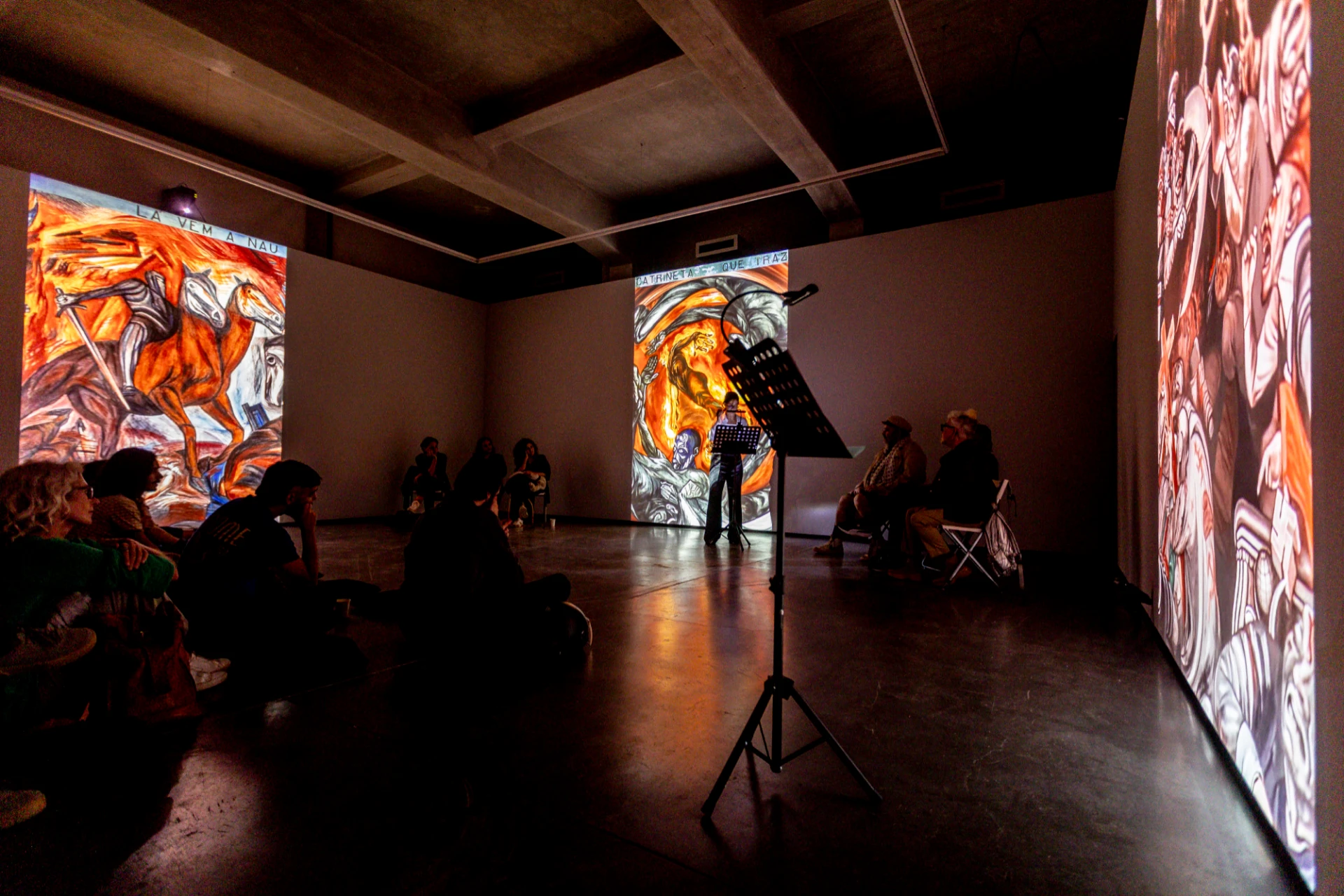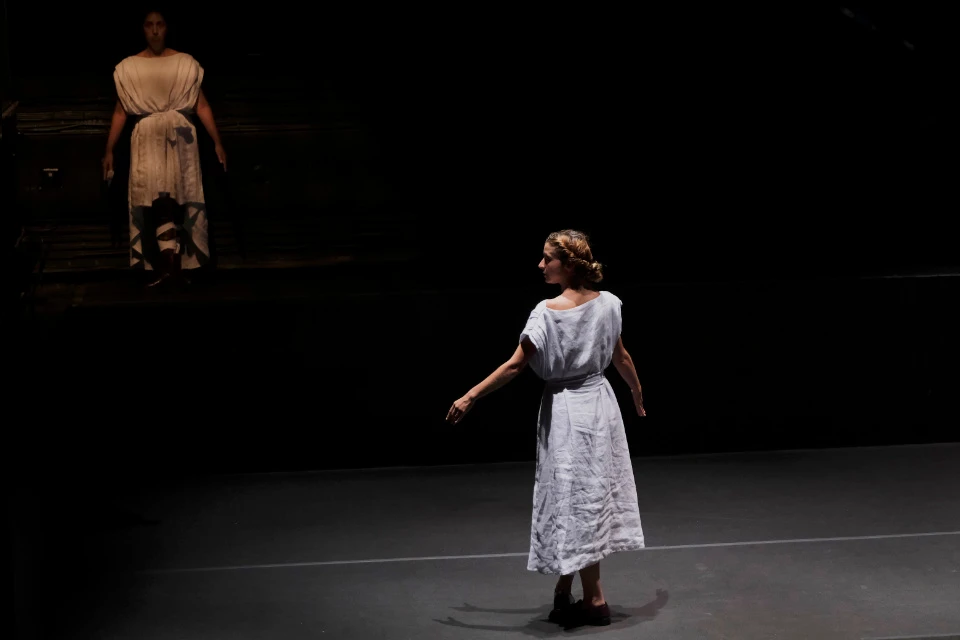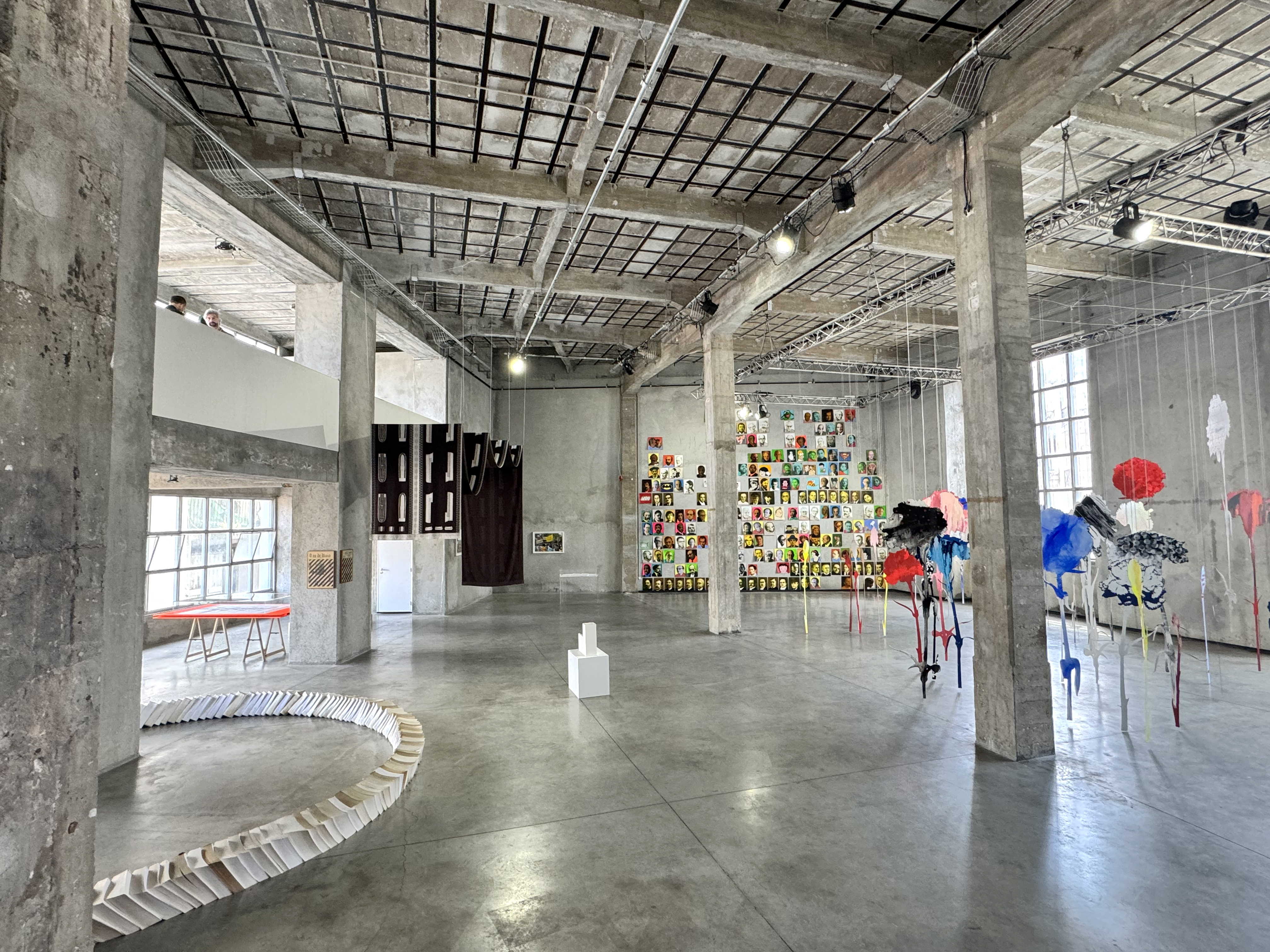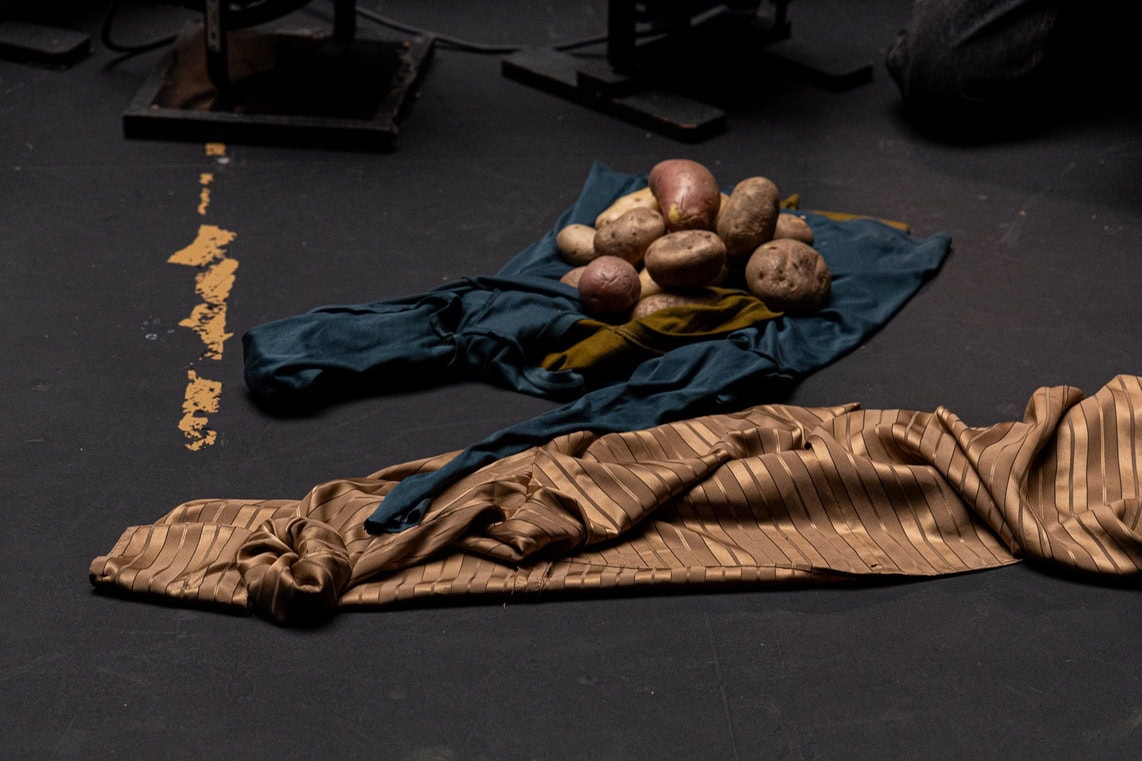article
The suspense of gesture: Troianas, by Renata Portas
In the Mário Viegas studio room at the São Luiz Municipal Theatre, Renata Portas presents a bold proposal made from minimal material: light and darkness, the statue-like body and the spoken word, on a millimetre-precise stage.
In the same dramaturgical gesture, the director of Público Reservado, a company founded in 2013, creates a plastic atmosphere of unreality, in which vitality is close to death, and the discursive breath cuts through the precision of each bodily movement, where any pity is absent. Everything is a sign of power and subjugation.
This show, Seneca's Troianas, is steeped in the written regime, maintaining all its textual integrity. The dramaturgy, which is also writing or calligraphy, brings the exercise of staging closer to the exercise of reading. The staging almost reveals the act of reading (pencil in the air before highlighting a passage, phrases we pause to review mentally). The lines repeated by the performers (as if underlining) function as an attentive work of apprehension, like the reader (and, consequently, the spectator) who leaves the word in their mouth to inhabit a new, unknown space.
If the harshness and beauty of the text, a language that is anything but contemporary or everyday, are expressed in the rigidity of the bodies, the starkness of the black stage creates a snapshot dilated in time, in contrast to the ‘television realism’ of atrocious speed. The viewer has no choice but to stop, with eyes and ears open.
Indeed, the distinguished actors of Troianas (Bárbara Bruno, Diogo Tormenta, Mariana de São Pedro Lamego, Maurícia Barreira Neves, Tiago Sines; and the chorus Anabela Sousa, João Coles, Renata Portas, Rodrigo Ferreira) recreate a stylised, codified, dense mode of representation, distinct both from the interpretation of the character's life and from the typical presentation of the here-and-now coordinates of the performance. It is, therefore, a denaturalised language, simultaneously luminous and walled, and in that sense, a duplicated theatre, an Ur code, as Pasolini would say. The mise-en-scène of speech (the unique vertex, beyond telling and showing) translates a form because the words are spoken, not for the first or last time, but eternally. It is a sublimated theatrical enunciation that goes against banal orality. The spoken language is chiselled with precise strokes on stone: stone as a discursive block and as the actor's flesh. Each enunciative figure comes to life, emerging from its objectual torpor, in the act of speaking. In an enunciative geometry, each character (Hecuba, Andromache, Astyanax, Pyrrhus, Agamemnon, Helen, Ulysses, etc.) is spoken by different actors, in a polyphonic regime that amplifies the thematic lines of loss and domination.
Like a chessboard (the lines marked on the floor, the fixed movements of the performers), the five human statues, of Hellenic inspiration, are as if sculpted from marble and moulded in suspense. A twist before taking a direction, an arm holding a garment, a hand wielding a dagger or spear (noteworthy are the movement work of Isabel Ariel and the lighting design of João Pecegueiro). An enigma that, from oracular, becomes visual. In clearly distinct registers, images of the static body that materialise in the lines come to mind: Romeu e Julieta by John Romão (2020, TNDMII) and Cinderela by Lígia Soares (2018, SLTM).
The human dimension, somewhere between suppressed and hyperbolic (impassive face, grimace, scream), brings the black box itself to the stage, but also the white cube, typical devices of theatricality and visuality. The black box that houses fiction, and the white cube that displays rationality. This theatron or polis, a place for viewing and exercising politics, creates an imago, perhaps orthodox in its use of light, perhaps concrete due to its composition.
Underlying everything is a grim atmosphere. In short, Troianas recounts, in the original Latin verse, the fates of the women of Troy after the war with the Greeks. The city is destroyed and the Trojan women are then enslaved and assigned to Greek masters as part of a batch of goods. Nevertheless, the sacrifice of these women's children is still demanded, a fact that will be consummated.
This tragedy addresses the cause and endurance of suffering as a result of the ever-renewed desire for power that inevitably inhabits and drives men. War will always be the result and interface of this thirst for power: taking life so that man can become equal to God.
Pirro says: ‘The victor is allowed to do whatever he wishes.’ Agamemnon replies: ‘It is fitting for those who are allowed to desire much to desire little.’ He goes on to say: "The greater your power, the more patiently you must endure. It is necessary to know, first of all, what the victor is allowed to do and what the vanquished must suffer. No one maintains violent power for long; moderate power endures. The higher Fortune elevates and exalts human strength, the more the fortunate must humble themselves and tremble at uncertain changes.” With complete lucidity, these two Greek victors argue about the laws that should govern those who dominate and those who suffer, showing that both sides can oscillate. Seneca brings his stoicism to the fore: flesh trembling like stone.
Thus, the distancing technique proposed by Portas' denaturalisation of language and schematic staging is a cry that is due to our contemporary and media-induced numbness. War, genocide, decimation, subjugation, and humiliation – ongoing at all times, in various Trojas in front of us that we do not see. It is a mandatory distance to talk about today's violence without today's words, according to the director.
Everything can always get worse, despite any good feelings we may have about the spectacle of the world. The sacrificed are executed – on stage, the spotlights fall with a crash that makes us shudder. The tragedy unfolds without restraint.
Renata Portas also recently presented the national premiere of Kung-Fu by Dieudonée Niangouna (2025, ESAP) and Adramelech by Valère Novarina (2022, Rua das Gaivotas 6). Other authors who are part of her imagination include Heiner Müller, Euripides, Jean-Luc Lagarce, Pedro Eiras, Samuel Beckett, and Peter Handke, whose plays she has staged.
BIOGRAPHY
António Figueiredo Marques writes essays, exhibition texts and articles on the performing arts, combining artistic and theoretical components. He reflects on dramaturgical editing and modes of scenic composition, studying the visual, sound, body and intermediate dimensions of contemporary performance. He is a researcher at ICNOVA, has a PhD in Communication and Arts (NOVA FCSH) and is co-editor of the website on performing arts and expanded performativities CRATERA | Performance & Cognition. As a performer, he regularly trains with Mónica Calle, Yael Karavan, Renato Ferracini, Miguel Moreira, Tiago Vieira, Jorge Silva Melo, Miguel Loureiro, among others.
ADVERTISING
Previous
interview
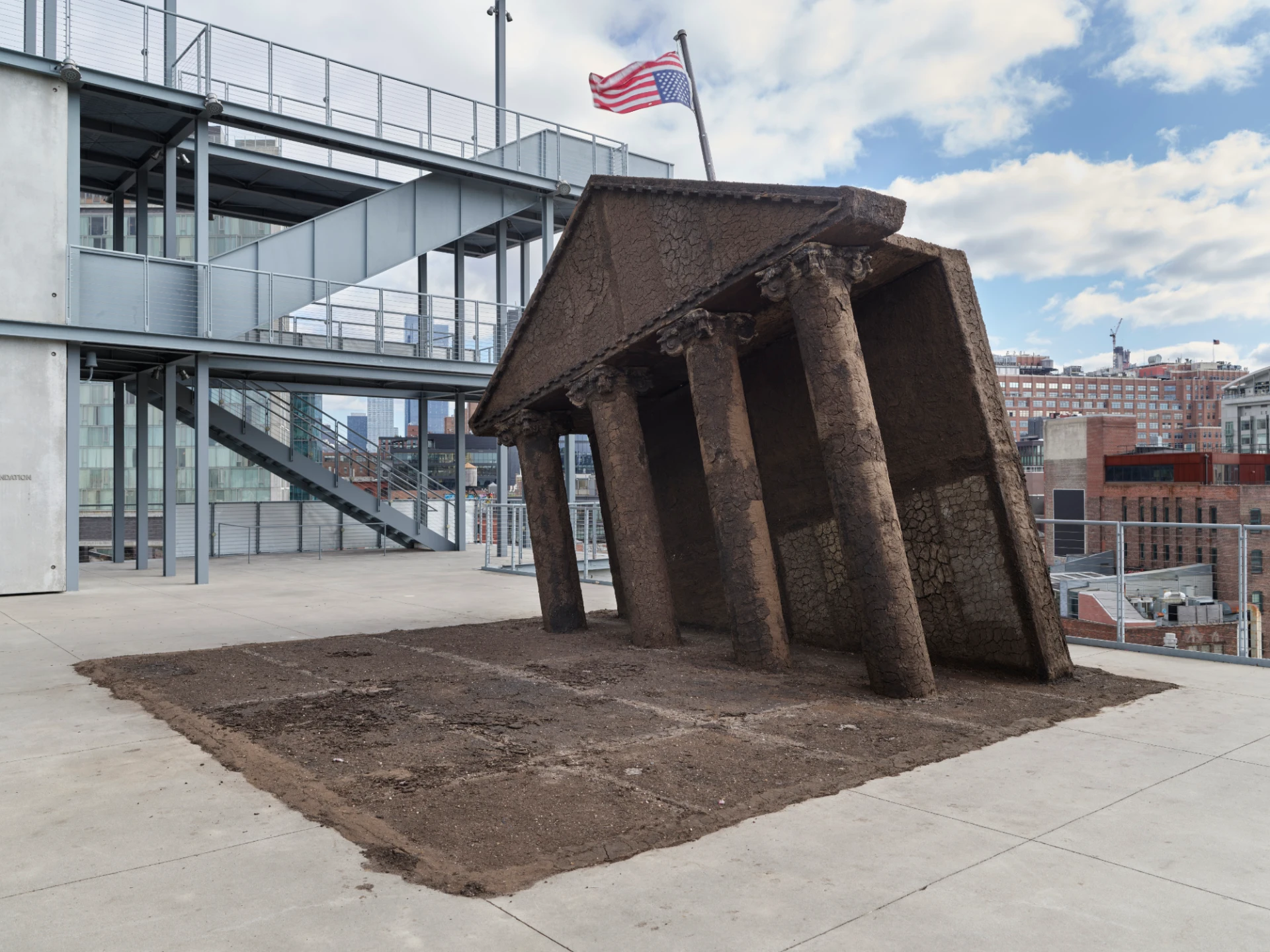
28 Jul 2025
Interview with Chrissie Iles
By Maria Inês Mendes
Next
article
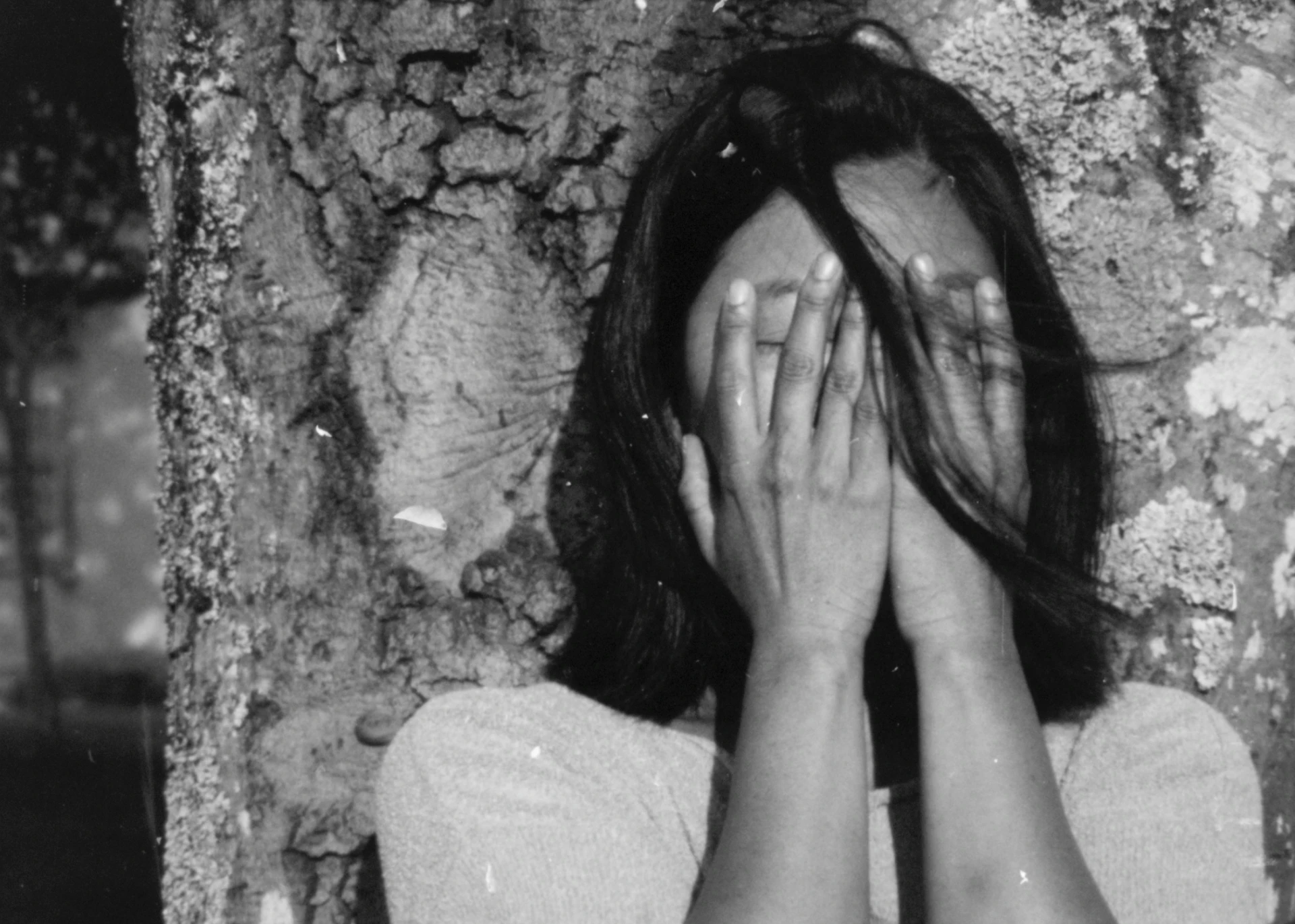
01 Aug 2025
Jiôn Kiim is the winner of the OpenCall for the UmbigoLAB artistic residency @ Fundação da Casa de Mateus
By Umbigo
Related Posts
